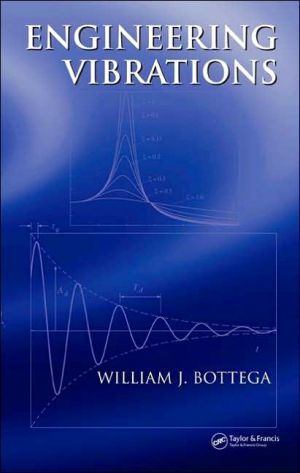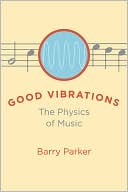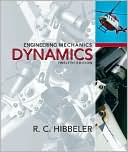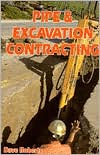Engineering Vibrations
A resource on vibration that imparts a deep physical as well as mathematical understanding is critical to students who first encounter the subject. Books with an overly mathematical focus can leave them without a grasp of the underlying physics and mechanics. Those that attempt to be reader-friendly often oversimplify the mathematics and mechanics, leaving them with a lack of depth and unprepared for advanced work and complex problems. With a carefully balanced approach, Engineering...
Search in google:
A resource on vibration that imparts a deep physical as well as mathematical understanding is critical to students who first encounter the subject. Books with an overly mathematical focus can leave them without a grasp of the underlying physics and mechanics. Those that attempt to be reader-friendly often oversimplify the mathematics and mechanics, leaving them with a lack of depth and unprepared for advanced work and complex problems. With a carefully balanced approach, Engineering Vibrations provides a systematic and unified treatment of mechanical and structural vibrations along with rigorous yet approachable mathematical development. This text advances abstract concepts from first principles. The author weaves together the physical interpretation and fundamental principles with applied problem solving and uses illustrative examples and case studies to reinforce the concepts, encourage effective interpretation of results, and assist in learning the techniques and procedures. Accompanied by more than 500 two- and three-dimensional drawings, the book offers tabulated results of case studies and a table of operators of various one-dimensional continua. It also contains problem-solving flowcharts for solving forced vibration problems for discrete and continuous systems. For each class of system, it explores the fundamental dynamics and studies free and forced vibrations under various conditions. Buildinga solid understanding of the principles and bases for mechanical and structural vibration, Engineering Vibrations offers a comprehensive and accessible introduction to the subject of vibrations and progresses systematically to advanced topics. Current Engineering Practice A tremendous amount of experience is distilled in this book on engineering vibrations. I am deeply impressed by the brilliance of selection and organization of topics and chapter, technical format and clear and instructive styles, which all result from a rigorous understanding of the need for a book of this scope. The book certainly should be considered an important contribution to the study of engineering vibrations as understandably and appropriately visualized by the author... . There is little doubt that each chapter is well and expertly written and well presented. Anyone with serious interest in the study of mechanical and structural vibrations will find this book almost a 'must have'.
PRELIMINARIESDegrees of FreedomEquivalent Systems Extension/Contraction of Elastic Rods Bending of Elastic Beams Torsion of Elastic Rods Floating Bodies The Viscous Damper Aero/Hydrodynamic Damping (Drag)Springs Connected in Parallel and in Series Springs in Parallel Springs in SeriesA Brief Review of Complex NumbersA Review of Elementary Dynamics Kinematics of Particles Kinetics of a Single Particle Dynamics of Particle Systems Kinematics of Rigid Bodies (Planar) Kinetics of Rigid BodiesConcluding RemarksBibliographyProblemsFREE VIBRATION OF SINGLE DEGREE OF FREEDOM SYSTEMSFree Vibration of Undamped Systems Governing Equation and System Response The Effect of Gravity Work and Energy The Simple PendulumFree Vibration of Systems with Viscous Damping Equation of Motion and General System Response Underdamped Systems Logarithmic Decrement Overdamped Systems Critically Damped SystemsCoulomb (Dry Friction) Damping Stick-Slip Condition System ResponseConcluding RemarksBibliographyProblemsFORCED VIBRATION OF SINGLE DEGREE OF FREEDOM SYSTEMS - 1: PERIODIC EXCITATIONStandard Form of the Equation of MotionSuperpositionHarmonic Forcing Formulation Steady State Response of Undamped Systems Steady State Response of Systems with Viscous Damping Force Transmission and Vibration IsolationStructural Damping Linear Hereditary Materials Steady State Response of Linear Hereditary Materials Steady State Response of Single Degree of Freedom SystemsSelected Applications Harmonic Motion of the Support Unbalanced Motor Synchronous Whirling of Rotating ShaftsResponse to General Periodic Loading General Periodic Excitation Steady State ResponseConcluding RemarksBibliographyProblemsFORCED VIBRATION OF SINGLE DEGREE OF FREEDOM SYSTEMS - 2: NONPERIODIC EXCITATIONTwo Generalized Functions The Dirac Delta Function (Unit Impulse) The Heaviside Step Function (Unit Step) Relation Between the Unit Step and the Unit ImpulseImpulse Response Impulsive and Nonimpulsive Forces Response to an Applied ImpulseResponse to Arbitrary ExcitationResponse to Step LoadingResponse to Ramp LoadingTransient Response by Superposition The Rectangular Pulse Linear Transition to Constant Load LevelShock SpectraConcluding RemarksBibliographyProblemsOPERATIONAL METHODSThe Laplace Transform Laplace Transforms of Basic Functions Shifting Theorem Laplace Transforms of the Derivatives of Functions ConvolutionFree VibrationsForced Vibrations The Governing Equations Steady State Response Transient ResponseConcluding RemarksBibliographyProblemsDYNAMICS OF MULTI-DEGREE OF FREEDOM SYSTEMSNewtonian Mechanics of Discrete Systems Mass-Spring Systems The Double Pendulum Two-Dimensional Motion of a Rigid FrameLagrange's Equations Virtual Work The Canonical Equations Implementation The Rayleigh Dissipation FunctionSymmetry of the System Matrices The Stiffness Matrix The Mass Matrix The Damping MatrixConcluding RemarksBibliographyProblemsFREE VIBRATION OF MULTI-DEGREE OF FREEDOM SYSTEMSThe General Free Vibration Problem and Its SolutionUnrestrained SystemsProperties of Modal Vectors The Scalar Product Orthogonality NormalizationSystems with Viscous Damping System Response State Space RepresentationEvaluation of Amplitudes and Phase Angles Undamped Systems Systems with General Viscous DampingConcluding RemarksBibliographyProblemsFORCED VIBRATION OF MULTI-DEGREE OF FREEDOM SYSTEMSIntroduction Steady State Response to Harmonic Excitation The Simple Vibration AbsorberModal Coordinates Principal Coordinates Coordinate Transformations Modal CoordinatesGeneral Motion in Terms of the Natural Modes Linear Independence of the Set of Modal Vectors Modal ExpansionDecomposition of the Forced Vibration ProblemSolution of Forced Vibration ProblemsMode IsolationRayleigh DampingSystems with General Viscous Damping Steady State Response to Harmonic Excitation Eigenvector Expansion Decomposition of the Forced Vibration Problem Solution of Forced Vibration ProblemsConcluding RemarksBibliographyProblemsDYNAMICS OF ONE-DIMENSIONAL CONTINUAMathematical Description of 1-D Continua Correspondence Between Discrete and Continuous Systems The Scalar Product and OrthogonalityCharacterization of Local Deformation Relative Extension of a Material Line Element DistortionLongitudinal Motion of Elastic RodsTorsional Motion of Elastic RodsTransverse Motion of Strings and CablesTransverse Motion of Elastic Beams Kinematical and Constitutive Relations Kinetics Euler-Bernoulli Beam Theory Rayleigh Beam Theory Timoshenko Beam TheoryGeometrically Nonlinear Beam TheoryTranslating 1-D Continua Kinematics of a Material Particle KineticsConcluding RemarksBibliographyProblemsFREE VIBRATION OF ONE-DIMENSIONAL CONTINUAThe General Free Vibration ProblemFree Vibration of Uniform Second Order Systems The General Free Vibration Problem and Its Solution Longitudinal Vibration of Elastic Rods Torsional Vibration of Elastic Rods Transverse Vibration of Strings and CablesFree Vibration of Euler-Bernoulli BeamsFree Vibration of Euler-Bernoulli Beam-ColumnsFree Vibration of Rayleigh BeamsFree Vibration of Timoshenko BeamsNormalization of the Modal FunctionsOrthogonality of the Modal Functions Systems Whose Mass Operators Are Scalar Functions Second Order Systems Euler-Bernoulli Beams and Beam-Columns Rayleigh Beams Timoshenko BeamsEvaluation of Amplitudes and Phase Angles Systems Possessing a Single Scalar Mass Operator Rayleigh Beams Timoshenko BeamsConcluding RemarksBibliographyProblemsFORCED VIBRATION OF ONE-DIMENSIONAL CONTINUAModal Expansion Linear Independence of the Modal Functions Generalized Fourier SeriesDecomposition of the Forced Vibration ProblemSolution of Forced Vibration Problems Axially Loaded Elastic Rods Torsion of Elastic Rods Strings and Cables Euler-Bernoulli Beams Rayleigh Beams Timoshenko BeamsConcluding RemarksBibliographyProblemsINDEX
\ Current Engineering PracticeA tremendous amount of experience is distilled in this book on engineering vibrations. I am deeply impressed by the brilliance of selection and organization of topics and chapter, technical format and clear and instructive styles, which all result from a rigorous understanding of the need for a book of this scope. The book certainly should be considered an important contribution to the study of engineering vibrations as understandably and appropriately visualized by the author... . There is little doubt that each chapter is well and expertly written and well presented. Anyone with serious interest in the study of mechanical and structural vibrations will find this book almost a 'must have'.\ \







